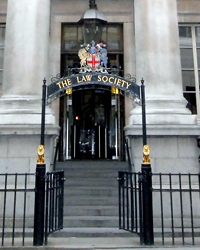
Law Society: Set to spend £43m on representative work
The practising certificate (PC) fee for solicitors is set to be frozen this year, but contributions to bolster the Solicitors Compensation Fund are to more than double ahead of an expected rise in claims arising from their involvement in fraudulent investment schemes.
The Law Society issued a consultation yesterday that laid out a proposed budget of £134.2m to run both the Solicitors Regulation Authority (SRA) and the Law Society’s representative function in 2018/19, compared to £134m for 2017/18 and £137m for the previous year.
With £32m coming from other sources – including most notably £14.8m in commercial income, £1m less than last year – that leaves a total net funding requirement of £102.2m. The society proposes to use £2.5m of reserves, meaning £99.7m needs to be collected from PC fees, £1.1m more than last year.
With more solicitors on the roll, this means the proposed PC fee staying at £278.
The SRA will get the largest slice of the money raised (£52.6m – the same as last year), while the Law Society will receive £30.6m under the ‘permitted purposes’ provision of section 51 of the Legal Services Act 2007. These are non-regulatory activities for which the Law Society can nonetheless charge the profession.
There are questions, not least from the SRA itself, about whether the society should have the continuing power to place a compulsory levy on solicitors for its representative work. However, the amount of money taken from PC fees for this has fallen for the second year running.
In all, with its other income, the Law Society as a representative body will be spending £46.5m in the coming year.
Some of the other costs of regulation beyond the Law Society’s control have gone up, including the levy for the Legal Ombudsman (up £500,000 to £10.3m) and Solicitors Disciplinary Tribunal (up £400,000 to £2.8m). The levy to pay for the Legal Services Board has remained static at £2.8m.
Once signed off by the Law Society council, the PC fee then has to be approved by the Legal Services Board.
The compensation fund pays grants to those who have suffered financial hardship because of a solicitor’s dishonesty or failure to account for client money. It particularly underwrites sole practitioners because where there is an innocent partner in a firm where money has been taken, its indemnity insurer covers the loss,
Last year, the SRA increased the level of contributions to the fund by £8 to £40 per solicitor. Firm contributions increased by £230 to £778. These are now set to spiral, up to £90 for solicitors and £1,680 for firms.
The SRA identified solicitor involvement in dubious investments schemes as a particular risk that it has to prepare for.
Chief executive Paul Philip said: “The extra layer of protection the compensation fund provides helps maintain trust and confidence in regulated law firms.
“We are responsible for making sure there are enough funds to cover potential future claims and the rise in contributions reflects the forecasts of increased pressure on the fund.”














Leave a Comment